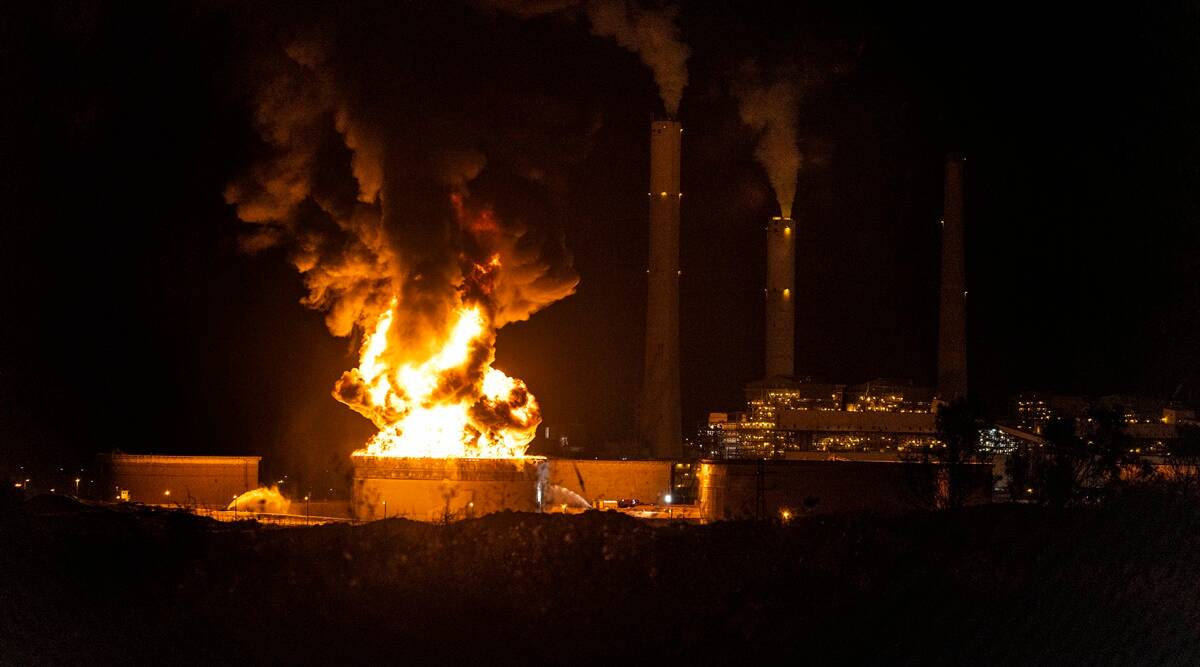Israelis and Palestinians have now entered in one of the worst fights in the last seven years which got intensified on Tuesday night. The recent fight between Israel and Hamas has led to a serious escalation in tensions since 2014 between the two. Israel stepped up its attacks on the Hamas-ruled Gaza Strip by carrying out hundreds of airstrikes and drawing a heavy barrage over the self-governing Palestinian territory.
The fierce barrage of rockets that flattened a high-rise building in the Gaza Strip was launched in retaliation by Israel, as Hamas and other Palestinian militants bombarded multiple rockets at Tel Aviv and Beersheba. The violence has escalated to a level that around 43 people in Gaza and 6 people in Israel have lost their lives so far.
Hamas, the Palestinian militant organisation on Tuesday started firing rockets at Israel’s economic hub Tel Aviv after violence erupted on Friday and Saturday in Jerusalem between Palestinians and Israeli security forces near Al-Aqsa mosque. Israel in its move to payback launched heavy airstrikes that destroyed a multi-story residential building in Gaza.
Al-Aqsa Violence: The Start
The violence that erupted exactly a month ago between Israeli security forces and Palestinians has now turned into rocket and airstrikes from both sides. The major reason behind the eruption of violence was Israel’s attempt to limit the gatherings at the Al-Aqsa Mosque, which is considered as the third holiest site in Islam.
Al-Aqsa has been a site of clashes for years as the place holds importance for both Jews and Muslims of Palestine. The mosque compound, known as Haram al-Sharif in Islam, is also a major holy site for Jews, who refer to it as the Temple Mount.
For Muslims, Al-Aqsa is the third holiest place in Islam as Prophet Muhammad travelled from Mecca to Al-Aqsa during the Night Journey and continued thereafter to heaven. While for Jews, Temple Mount, located in the compound, is a walled-in area dating back to the time of the Second Jewish Temple. Jews believe that these walls were built around the summit of Mount Moriah where Abraham offered his son Isaac as a sacrifice to God.
The recent clash in Jerusalem broke because of the long-existing dispute over the land ownership between Israeli and Palestinians. The clash erupted on April 12, after Israeli forces put up blockades to prevent people from gathering in huge numbers during the month of Ramzan at the Damascus Gate Plaza in the part of East Jerusalem which is under Israel’s control.
Despite imposing a limit of 10,000 people for prayer gathering at the Al-Aqsa by Israeli forces, thousands of Palestinians headed to the mosque for prayers which led to the clashes. As per reports, more than 200 people were injured in the clash.
In response to this, grenades and rockets were fired towards Israel’s Tel Aviv and Beersheba on Monday by Hamas, the militant organisation in Gaza Strip. This attack led by Hamas made Israel launch airstrikes in retaliation towards Gaza. As per the official statement, the airstrikes by Israel were made in order to push back Palestinian fighters and protesters.
Israel’s Iron Dome: Helping Israel counter rocket attack
As soon as the conflict escalated after Saturday and Sunday clashes in the Middle-Eastern country, Israel carried out hundreds of airstrikes in Gaza, while Palestinian militants fired multiple rocket barrages at Tel Aviv and the southern city of Beersheba. Amid the clashes, the Israel Defense Forces (IDF) released a video of its Iron Dome air defence system filling the sky with interceptors as more than 100 rockets rained down on Tel Aviv and Central Israel on Tuesday evening.
Israel’s Iron Dome is a short-range air-defence system designed to intercept rockets, artillery, and mortars. The Iron Dome relies on a system of radar and analysis to determine whether an incoming rocket is a threat to the country or not. It only fires an interceptor, if the incoming rocket risks hitting a populated area or important infrastructure in Israel.
The technology of Iron Dome is in use since 2011 by Israel and is really helping the country to protect its population and important structures at times like these when aerial exchanges can harm the country.

